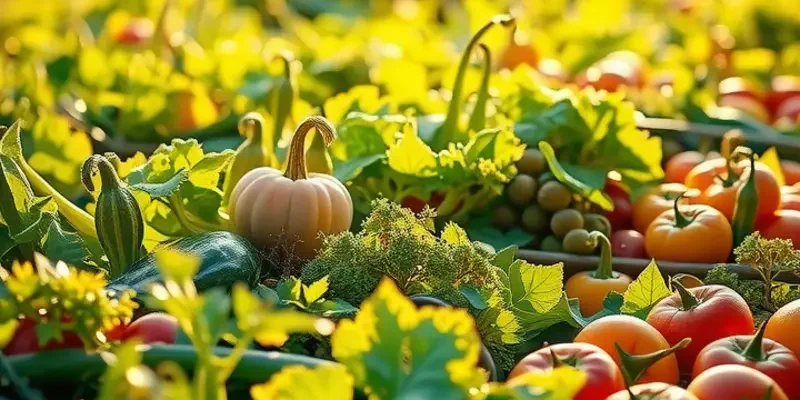Achieving a smooth sauce consistency is a critical skill in cooking, enhancing dishes from simple pastas to complex gourmet setups. By following straightforward techniques, home cooks can elevate their culinary creations, ensuring each sauce is velvety and bursting with flavor. This guide provides essential tips that will help you master the art of sauce-making seamlessly.
Understanding the Basics of Sauce Consistency

In mastering the art of sauce consistency, understanding ingredients, ratios, and techniques is crucial. The essence of a perfect sauce lies not just in its flavor but also in its texture. To achieve that smooth, velvety finish, certain foundational principles must be followed.
Every ingredient in a sauce plays a specific role that affects its consistency. At the core, thickeners are pivotal in transforming a sauce from runny to smooth. Roux, a mixture of fat and flour, is a stalwart in this domain. When heated, it thickens sauces by absorbing liquids and expanding.
Another effective thickener is cornstarch, which requires activation in a cold liquid before being added to a hot sauce. This method prevents lumps, ensuring a uniform texture. For those leaning towards natural thickeners, arrowroot and potato starch are excellent alternatives. These options are especially pertinent for gluten-free diets, as they don’t rely on wheat-based flour.
The ratios of these thickeners can’t be haphazard. Typically, a standard ratio for a roux is equal parts fat to flour. For sauces needing a more transparent finish, such as certain glazes, using a lesser quantity of starch per liquid volume is recommended.
Temperature management plays an underrated yet significant role in sauce consistency. A gentle simmer is often ideal. High temperatures can cause ingredients to break down unevenly, affecting the final texture. Gradual heating ensures that starches activate properly and proteins don’t yield a grainy sauce.
The technique used in incorporating thickeners affects the outcome as well. Continuous stirring is critical to prevent any form of separation or clumping. When working with egg yolks to emulsify and thicken, they should be tempered first—gently combining them with hot liquid to avoid curdling.
Moreover, it’s wise to consider the sauce’s flavor as adjusted through consistency. A heavier sauce may require more bolder flavor notes to cut through its richness. Conversely, if the sauce is too thin, consider reducing it through extended cooking to intensify both flavor and thickness without adding additional starches or fats.
For those seeking a comprehensive approach to improving sauce consistency, understanding the interplay of elements is invaluable. Balancing the ingredient choices with the right temperature and technique will yield delightful results. For tips on maintaining your sauce even after preparation, consider exploring safer storage of sauces.
Techniques for Perfectly Smooth Sauces

Achieving sauce nirvana requires practice, patience, and a handful of indispensable techniques. Mastering these methods will help troubleshoot common issues like graininess or separation.
Emulsification is the cornerstone of many smooth sauces. This process involves combining two immiscible liquids, like oil and vinegar, into a stable blend. For creamier textures, ensure both ingredients are at room temperature. Slowly introduce the oil to the vinegar while whisking vigorously. A handheld blender can be a great tool to maintain a consistent blend. If your sauce starts to separate, a dash of warm water and continuous whisking often rescues the emulsion.
For sauces that require straining, like a béchamel, use a fine-mesh strainer or a chinois. Straining helps remove any lumps, resulting in an incredibly smooth consistency. Pass the sauce through the strainer while it is warm. Afterward, return it to low heat, whisking to reacquire the desired texture.
Blending offers another option for consistent silkiness, especially for thick or chunky sauces like marinara. After all ingredients are cooked and softened, use an immersion blender directly in the pot, or transfer the sauce to a standing blender. Be cautious of hot splashes during blending. As a tip, slightly tilt the pot and blend towards the top, allowing gravity to prevent overflow.
The simmering technique often refines sauce textures further. Here, no vigorous stirring is needed. Use a wide pan for even heat distribution and allow the sauce to simmer gently. This process reduces the liquid content, concentrating flavors and thickness naturally. Be patient and give the sauce time, disturbing it minimally.
Incorporating these techniques seamlessly into your cooking routine will transform your sauce-making game. For those seeking even more in-depth guidance on sauce simmering specifics, consider exploring easy sauce simmering.
By refining these skills, you ensure each sauce you create becomes a testament to your culinary prowess. Whether draping over pasta or lining a plate, your perfectly smooth sauces will not only taste better but look the part too.
Final words
Having a handle on achieving smooth sauce consistency can dramatically enhance your cooking experience and the quality of your dishes. By understanding the building blocks of sauces and applying essential techniques, even novice cooks can create professional-quality sauces at home. Whether it’s a rich béchamel, a tangy vinaigrette, or a dazzling hollandaise, the knowledge gained from this guide will empower you to experiment and innovate in your kitchen. Embrace the journey of sauce-making, and watch your culinary creations transform into delicious works of art.







